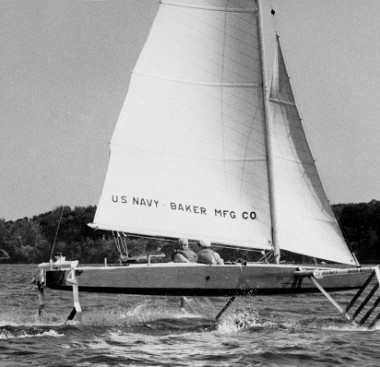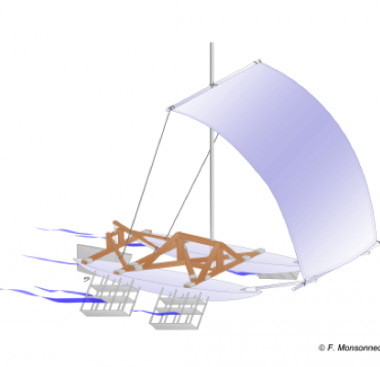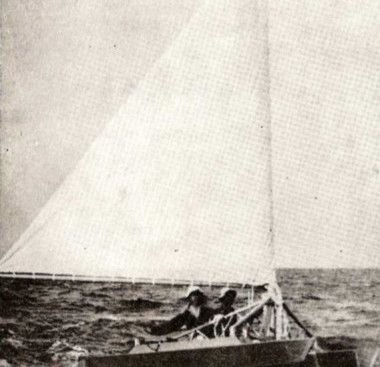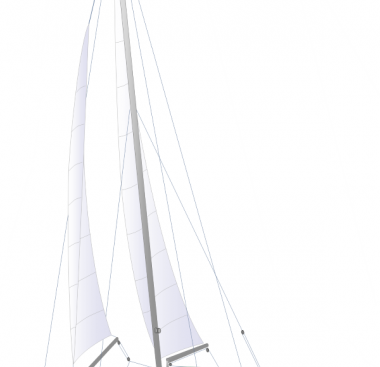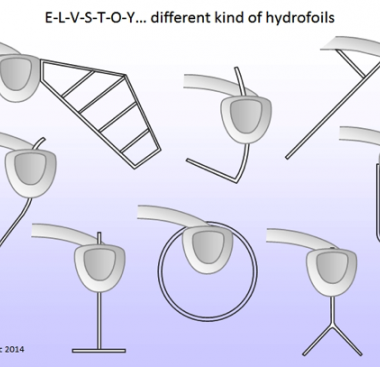The Foil Alphabet
Rudders and centerboards with hydrofoils, profiled arms, wing masts… after the 34th America’s cup, it would be easy to say “we are in the age of wings”. And now it’s not only on multihulls but also on monohulls!
However, wing masts and hydrofoils on sailboats are not a new invention. In 1913 Alexander Graham Bell and Casey Baldwin built Nancy, a hydrofoil sailing model. In 1938, Robert Rowe Gilruth, the “father of America’s human space flight”, built Catafoil, the first full-scale “flying” sailing boat. In the fifties, Gordon Baker designed Monitor, a fabulous monohull equipped with a very special system to control the incidence of his rudder (based on the force produced by the rig) and two wing sails (however, she only flew with soft sails). That’s only a very small sample of the first sailing hydrofoils. If we agree that a classic centerboard is a symmetrical hydrofoil, then the first hydrofoils were developed near Taiwan, before the year 475 A.D!
In the 21st century, the “C-foil” and the “L-foil” are well known, but naval architects, engineers and enthusiasts have designed many other kinds of foil - or letters in a foiler lexicon that now includes C, E, J, L, O, S, T, U, V and Y. Attached is “The Foil Alphabet”, an article written in 2014 for the French blog Foilers, translated with the help of Nicholas Waller at www.centpourcentanglais.com
The Foil Alphabet
By Frederic Monsonnec at Foilers.
